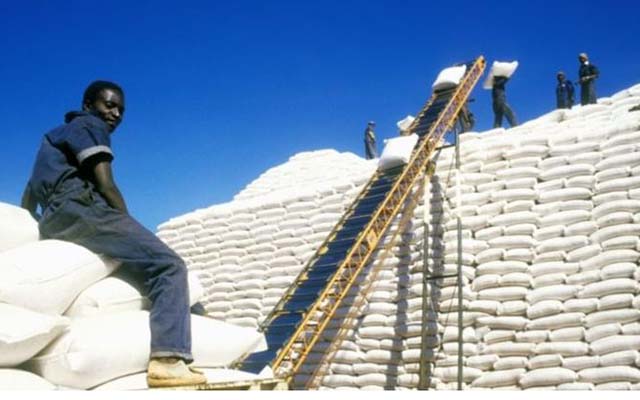‘Zim has enough grain till harvest’

Samantha Chigogo Herald Correspondent—
Zimbabwe has enough grain in stock to cater for thousands of vulnerable households, as Government remains committed to ensuring that no one starves until the next harvest.Addressing stakeholders at the fourth multi-stakeholder consultative meeting in Harare yesterday, Grain Task Force member Air Commodore Josphat Marangwanda said all vulnerable families would be catered for.
“As of November 2016, available grain stocks of 331 068 tonnes were enough to provide a nine month cover basing on the current monthly grain requirement of 36 492 tonnes,” he said.
“However, the same stocks would provide a seven months cover basing on the projected monthly grain requirement of 55 538 tonnes and a total of US$287,7 million was paid for maize purchases with US$99,6 million going towards local deliveries and US$187,7 million for imports.”
Air Commodore Marangwanda said between February and October this year, Government managed to distribute 245 928 tonnes of maize to vulnerable households across the country.
“The initial target was 284 079 tonnes, meaning the average success rate of Government’s grain distribution was at 96 percent,” he said.
“Failure to meet the monthly distribution target was largely attributed to inadequate transport, shortage of bags and lack of funding for internal grain distribution.”
Air Commodore Marangwanda said Government would continue subsiding grain distribution with public works initiatives.
“The public works programme is successfully ongoing in all provinces and to date there are 231 833 participants under the programme,” he said.
“Apart from the free grain being distributed to the labour constrained households, Government, through GMB, also introduced maize selling points where the populace is accessing subsidised maize at $15 per bag.”
Air Commodore Marangwanda said private partners have been complimenting Government efforts and indications are that they had enough grain, including rice, in stock.
He expressed concern over transportation of grain, which he said remained the main problem affecting grain distribution to poor families.
“Government was still mindful of the fact that as we drift away from the 2015-2016 maize harvesting season, food insecurity would increase as more and more people become vulnerable, thus necessitating constant updating of vulnerable registers,” Air Commodore Marangwanda said.
“This exercise is ongoing and shall continue until such a time that the Government is satisfied that the populace is no longer food insecure.”
The recent Zimbabwe Vulnerability Assessment Committee (ZimVac) assessment of the rural populace done in the second quarter of the year concluded that the number of food insecure households was 820 000, requiring 41 000 tonnes of grain per month between December 2016 and March 2017.
The urban assessment projected the number of urban vulnerable households as 290 750 from December 2016 to March 2017 and they would require 14 537 tonnes of grain per month.











Comments